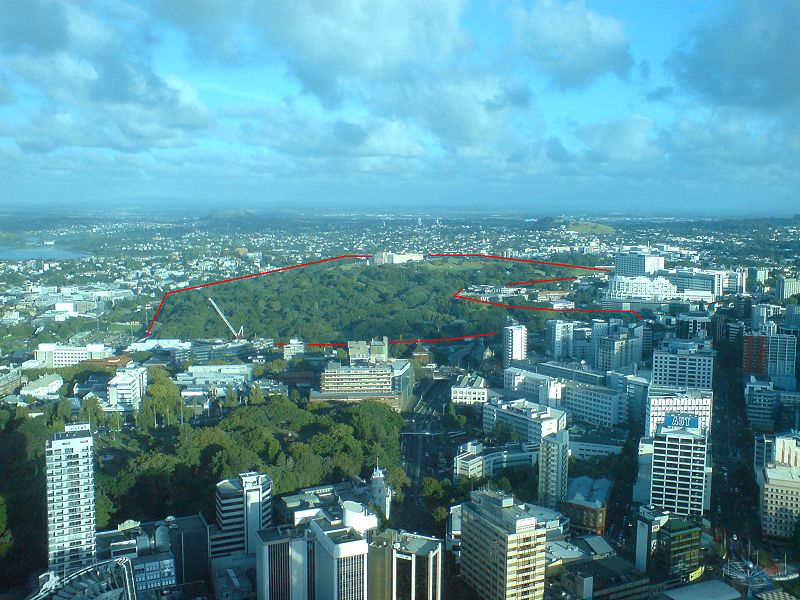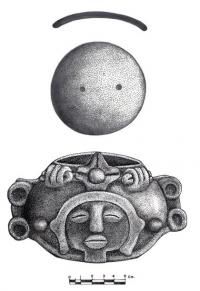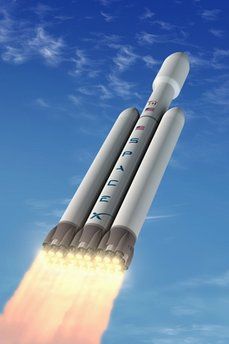
© Ingolfson / WikipediaThe Auckland Domain in Auckland City, New Zealand. The red lines show the approximate boundaries. Albert Park in the foreground.
New research on Auckland's volcanic field has uncovered a volcano which had been all but forgotten, and this work will better define what is most likely to happen when the next volcano forms in Auckland. The research is part of the Devora project, a seven-year study to better understand the volcanic history of Auckland, thus preparing the city for a future eruption.
By analysing records from boreholes drilled for foundations of buildings, roads and or for water supply, scientists have been able to identify a previously little-known volcano now hidden beneath the suburb of Grafton, close to the Auckland University Medical School.
Geologist Bruce Hayward, of Geomarine Research, put together the volcanic puzzle by linking lava flows between boreholes and measuring changes in the thickness of the lava flows and volcanic ash it is possible to identify a buried volcanic crater.
"The crater is about 1km across and filled with solidified lava flows," Dr Hayward said. Auckland is built on the Auckland Volcanic Field, a group of about 50 volcanoes that have erupted over the last 250,000 years. Scientists believe that most of the volcanoes erupted only for a few months or years and then became extinct. However, our knowledge of exactly when each volcano erupted, and how future eruptions might progress is incomplete.


